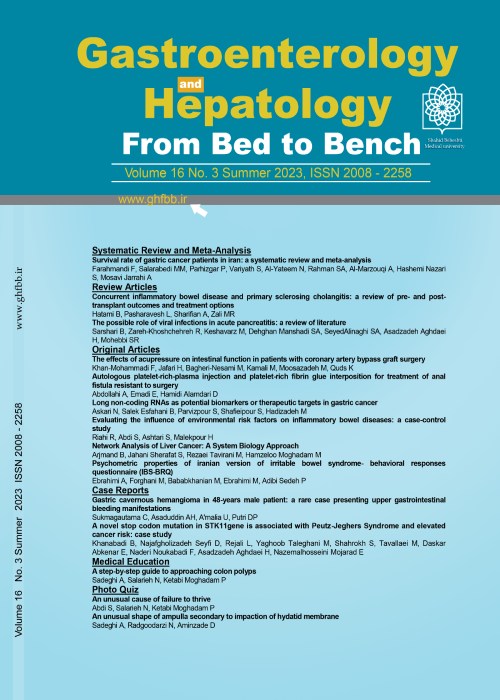Development of PBC/SSc overlap syndrome in chronic GVHD patient: immunological implications in the presence of mitochondrial, nucleolar and spindle midzone autoantigens
Author(s):
Article Type:
Case Report (دارای رتبه معتبر)
Abstract:
Chronic Graft versus Host Disease (cGVHD) is a complex disease resulting from donor T-cell recognition of a genetically disparate recipient that is unable to reject donor cells after allogeneic Stem Cell Transplantation (HSCT). cGVHD has some features resembling to autoimmune diseases (AD) such as Sjögren syndrome, primary biliary cirrhosis (PBC) and scleroderma (SSc). Also patients with cGVHD could develop extensive cGVHD with scleroderma-like skin manifestations and other clinical signs similar to those of patients with scleroderma. We take into consideration a patient with GVHD that developed PBC/SSc overlap syndrome with a complex and particular autoantibodies profile. Indirect immunofluorescence (IIF) with double coloration showed a cytoplasmic mitochondrial-like pattern, a clumpy nucleolar staining pattern, and a cell-cycle related staining pattern. Following anaphase onset, proteins regulator of cytokinesis localizes to the overlap zone on the ends of midzone microtubules and becomes compacted during furrow ingression to form the midbody. Second level tests confirmed the presence of anti-mitochondrial antibodies M2-subunit but no other autoantibodies were found. We performed a home-made immunoblot analysis that identified a 37 kDa fibrillarin band, and not identify 47 kDa, 31KDa and 18/20 kDa bands. After literature review of these possible cellular localizations, the proteins recognized by our patients serum seem likely to be Aab to core midzone organizer components. However, due to the unavailability of the proper techniques in our laboratory, we were not able to further characterize them. The pathogenesis and morbidity of cGVHD after HSCT remains enigmatic, but the presence of specific autoantibodies are the hallmark of AD and represent a possibility of differential diagnosis. Standard techniques combined with the use of non-routinely laboratory techniques are a usefully and complementary method for studying difficult and particular cases. In fact, these autoantibodies will be considered as diagnostic and not as esoteric antibodies. In conclusion, a re-assessment of the diagnostic protocols in cGVHD together with a precise observation of the clinical and laboratory picture will ultimately help us clarify the disease and could provide a better understanding of the immune network deregulation.
Keywords:
Language:
English
Published:
Gastroenterology and Hepatology From Bed to Bench Journal, Volume:10 Issue: 4, Autumn 2017
Page:
12
magiran.com/p1776503
دانلود و مطالعه متن این مقاله با یکی از روشهای زیر امکان پذیر است:
اشتراک شخصی
با عضویت و پرداخت آنلاین حق اشتراک یکساله به مبلغ 1,390,000ريال میتوانید 70 عنوان مطلب دانلود کنید!
اشتراک سازمانی
به کتابخانه دانشگاه یا محل کار خود پیشنهاد کنید تا اشتراک سازمانی این پایگاه را برای دسترسی نامحدود همه کاربران به متن مطالب تهیه نمایند!
توجه!
- حق عضویت دریافتی صرف حمایت از نشریات عضو و نگهداری، تکمیل و توسعه مگیران میشود.
- پرداخت حق اشتراک و دانلود مقالات اجازه بازنشر آن در سایر رسانههای چاپی و دیجیتال را به کاربر نمیدهد.
In order to view content subscription is required
Personal subscription
Subscribe magiran.com for 70 € euros via PayPal and download 70 articles during a year.
Organization subscription
Please contact us to subscribe your university or library for unlimited access!


